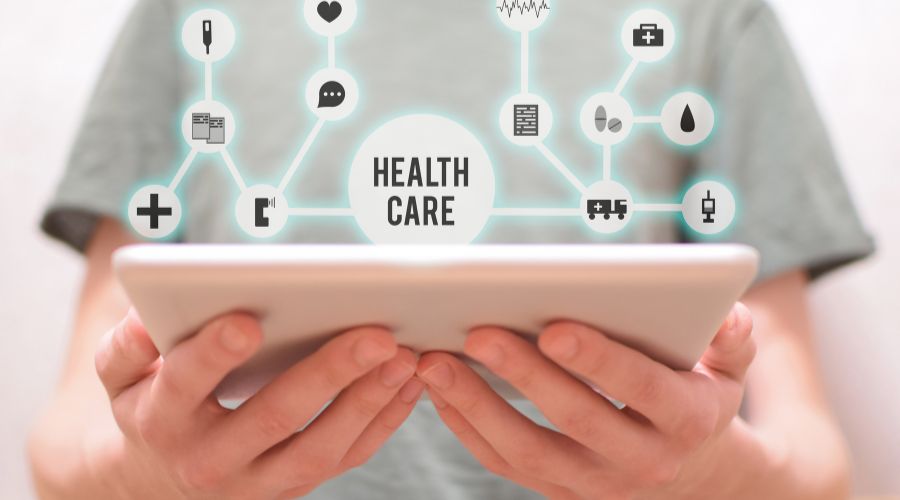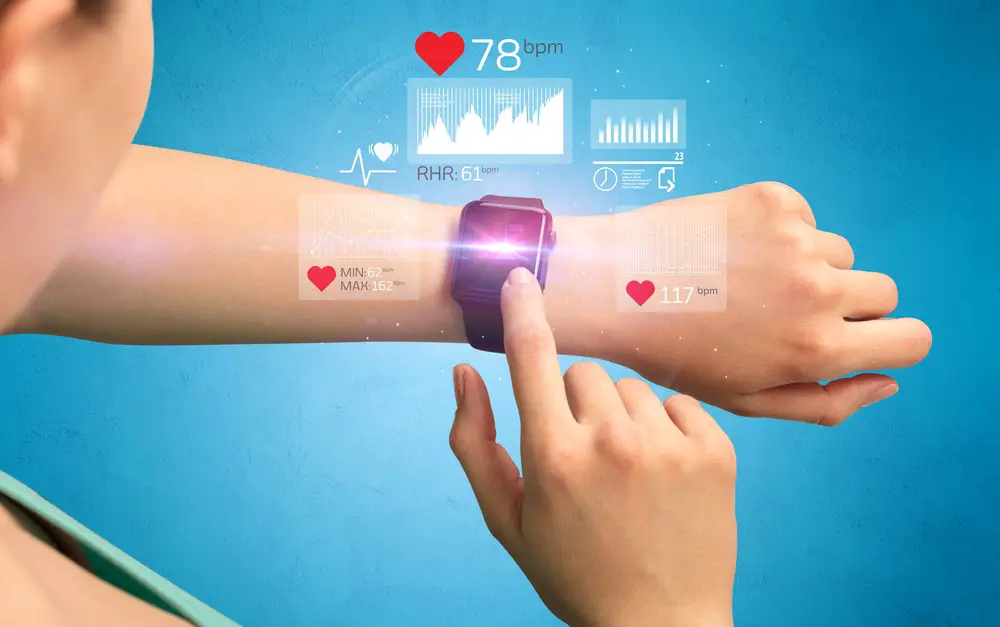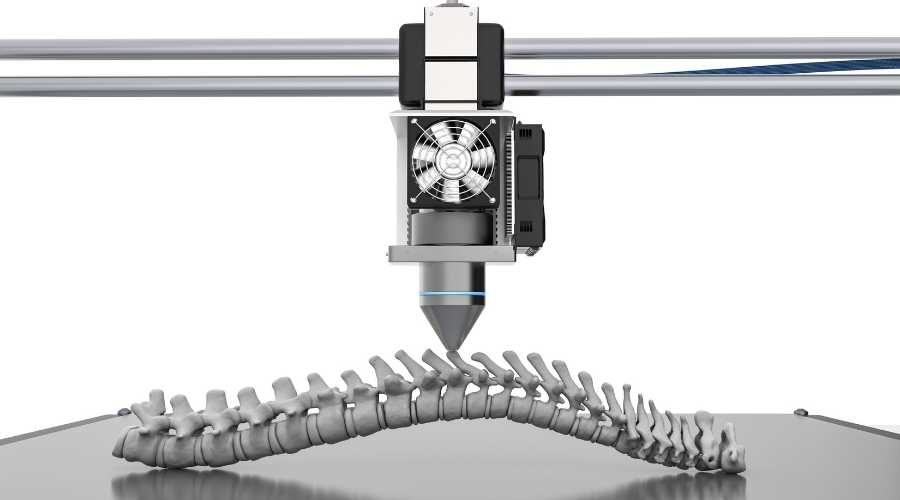It’s no secret that digital transformation is reshaping the healthcare industry.
From a patient’s perspective, we now benefit from online resources, patient portals, virtual care platforms, and a growing range of free or low-cost apps that improve screening, communication, prescription management, and much more.
For healthcare providers, digital tools can improve the accuracy and timing of screening and diagnostic testing, enhance relationships with patients, provide efficient electronic records management, and much more.
As digital transformation continues to advance, we’re just starting to see the numerous benefits it can have in the healthcare field.
Of course, many challenges lay ahead, including increased patient safety, privacy and security concerns, and ensuring the widespread availability of critical digital tools for underserved populations.
But digital healthcare transformation continues to advance at a rapid pace.
This post will look at how digital transformation is impacting the healthcare sector, the main benefits, challenges and emerging trends in everyday medical applications.
Table of Contents
- What Is Digital Transformation?
- The Challenges of Digital Transformation in the Healthcare Market
- Examples of Key Digital Healthcare Transformation Trends
- Conclusion
What Is Digital Transformation?
Before diving into how digital transformation impacts the healthcare sector, it might be helpful to recap what digital transformation is in the first place.
In a nutshell, digital transformation is the process of using digital technologies to create new or different business processes, products, or services. This can include anything from automating manual processes with RPA to developing new customer-facing applications.
In other words, digital transformation is about using technology to improve the way we do things in our business. And while it’s often thought of in terms of improving efficiency or reducing costs, it can also be about creating new value for customers or improving the quality of care.
Unlike digitalization, which focuses on simplifying specific tasks, digital transformation takes a more holistic approach and restructures a company’s culture and workflow through the use of technology.
How Does Digital Transformation Apply to Healthcare?

There are many potential benefits of digital healthcare transformation.
We’ll cover some specific trends and examples below, but here are a few of the fundamental changes we can see when legacy systems are replaced or improved with the use of technology in a medical setting:
1. Improved patient care: When doctors and nurses have access to patients’ medical records, they can provide better, more coordinated care. And when patients can access their own records, they can take a more active role in their own health. As we’ll see below, accessing and reviewing medical records and test results is much easier now due to the use of secure patient portals.
2. Fewer errors: Automating manual processes with RPA tools can help reduce errors and improve safety. For example, computerized physician order entry (CPOE) systems can help reduce medication errors when transmitting things like medication, laboratory, and radiology orders. CPOE systems can check for accuracy and completeness, along with checking for drug interactions and allergies.
3. Reduced costs: Digitizing paper-based processes can help save money. For example, using electronic health records (EHRs) can help reduce the need for paper records and the associated costs of storing and managing them. When medical facilities use advanced EHR systems, these savings may even result in lower overall patient admission costs.
4. Improved access to care: When providers have access to digital tools, including virtual care platforms with video and chat technology, they can more easily connect with patients and provide care at a distance. This is especially important in rural or underserved areas.
5. Enhanced provider satisfaction: Digital tools can help improve provider workflow and make their jobs easier. For example, EHRs can help streamline documentation and make it easier to find information. Additionally, healthcare-specific enterprise resource planning (ERP) systems, such as the ERP solution from Infor, can reduce operational costs, improve compliance measures, and improve overall efficiency.
6. Increased patient engagement: When patients have access to their own health information, they can be more engaged in their care. They can also better manage chronic conditions and make lifestyle changes to improve their health.
7. Improved population health: When providers have access to analytical data about groups of patients in their area, they can identify trends and take action to improve the health of entire populations. For example, public health officials can use data to track the spread of disease and take steps to prevent outbreaks.
8. Research and Development: When data is digitized, it can be used to develop new treatments and cures. For example, the Cancer Genome Atlas project is using DNA sequencing to identify mutations that cause cancer, which could lead to new targeted therapies.
9. Big data analytics: When healthcare data is collected and stored in a digital format, it can be analyzed to identify trends and improve care. For example, hospitals can use data analytics to predict which patients are at risk for readmission and take steps to prevent it.
The Challenges of Digital Transformation in the Healthcare Market

Of course, digital transformation (in any sector) is not without its challenges. And perhaps the biggest challenge is culture change.
For example, healthcare has long been a paper-based industry, and changing to a digital mindset can be difficult for some providers. Additionally, there can be resistance to change from both patients and providers.
Another fundamental challenge, especially when considering the shift to cloud storage and virtual care, is patient data security.
When sensitive patient information is stored electronically, there’s a greater risk of it being hacked or leaked. That’s why it’s extremely important to have strong security measures in place when adopting digital tools.
Finally, there’s the issue of cost. While digital transformation can save money in the long run, the upfront costs can be significant. That’s why it’s important to have a clear business case for digital transformation before embarking on a project.
Tips for Overcoming Challenges in Digital Healthcare Transformation
Despite the challenges, there are many ways to overcome them and reap the benefits of digital transformation in healthcare.
Here are a few general tips:
1. Start small: Don’t try to do everything at once. Focus on a few key areas and pilot projects to get started.
2. Get buy-in from stakeholders: Change can be difficult, so it’s important to involve all stakeholders in the process and get their buy-in. This includes providers, patients, and IT staff.
3. Define the business case: Make sure you have a clear understanding of the costs and benefits of digital transformation before starting a project. This will help you get buy-in from stakeholders and make sure the project is successful.
4. Invest in training: Change can be difficult, so it’s important to invest in training for both providers and patients. This will help them understand and use the new digital tools.
5. Be patient: Change takes time, so don’t expect everything to happen overnight. Stick with it and you’ll see the benefits of digital transformation in healthcare.
Digital transformation is a journey, not a destination. By taking small steps and involving all stakeholders, you can overcome the challenges and reap the many benefits.
Examples of Key Digital Healthcare Transformation Trends

The following examples illustrate some of the key digital transformation trends in healthcare.
Wearable Technology
Wearable technologies used in health care include noninvasive and autonomous devices
that can capture, analyze, and “aggregate physiological data to improve personal health and well-being.”
These devices include:
- Hearables
- Smartwatches
- Fitness Trackers
- Eye Wear
- Body Devices
- Skin Patches
As wearable device technology improves, including data accuracy, active materials, IoT sensors, batteries and wireless connectivity, and more companies enter the market, wearable technology will continue to drive digital transformation in the healthcare sector.
Telehealth / Telemedicine

Telehealth is another health-related technology trend that’s been on the rise for several years, with a massive increase in adoption due to national policy changes and, of course, the COVID-19 pandemic.
As the name implies, telehealth involves a virtual healthcare professional interacting with patients via video and chat platforms, eliminating the need to visit clinics in person.
And, thanks to the trend toward virtual care, using an “anywhere, anytime” model, healthcare providers have been able to see and screen many more patients compared to traditional in-person visits.
In fact, the use of virtual care platforms and telemedicine has grown significantly in the past few years, with over a third of employers offering plans that support telemedicine, and over half of consumers and physicians expecting to use mobile devices as their main touchpoint for future visits.
As virtual care platforms improve, with better connectivity, better UX for mobile apps, and a continued focus on patient security, telehealth will be one of the key components of digital transformation for patients, physicians, universities, hospitals, and small private healthcare facilities.
Online Patient Portals
As mentioned earlier, online platforms and patient portals, where patients can get access to their health records, are also a key technological trend in healthcare digital transformation.
Patient portals can serve as a private and secure hub where patients can access and review medical records, schedule appointments, request prescription refills, message their doctor, review test results, and more.
In some cases, these sites also integrate with a full virtual care platform, so doctors can also conduct telehealth visits and provide non-urgent care to their patients via one central portal.
Most of us are now familiar with using these portals to communicate with our doctors and receive important information.
And, in numerous instances, online patient portals have improved the doctor-patient relationship, along with improved health awareness and adherence to treatment and therapy programs.
Although many patients are still testing the waters with these portals, and older patients might be reluctant to use these as a primary communication hub, the technology continues to improve.
However, as the healthcare sector continues to embrace digital transformation, they will need to build patient portals that work for a broader group of patients and healthcare needs, with a focus on platform architecture, EHR management, overall design and content optimization, patient accessibility, security, and integration with other clinical tools.
Artificial Intelligence

One of the most important advances in digital technology for healthcare is the use of Artificial Intelligence (AI). Specifically, AI is being used to improve screening and assist with earlier diagnoses and interventions.
For example, AI technology, such as deep neural networks, can support smartphone-based diagnostic apps in detecting diabetes. AI also has the potential to speed up and improve the accuracy of human interpretation of diagnostic imaging from x-rays and MRIs.
There are numerous possibilities for improving patient screening by providing convenient mobile apps and low-cost tools based on AI technology.
For example, AI has been a key technology used in hospitals and medical offices to identify COVID-19 symptoms, analyze medical records, and distinguish particular symptoms (i.e. loss of smell) from other illnesses.
As digital transformation in health care evolves, AI will enable the development of better diagnostic and predictive tools for providers.
In the future, AI may also be used for virtual health assistance, which can provide personalized recommendations for diet, physical activity, and mental health based on a person’s individualized health data.
This technology is already being piloted by some companies and holds great promise for the future of digital health.
Sensor Technologies

Sensor technology can be used to collect data about a patient’s health, which can then be analyzed to provide data-based insights that improve patient care.
As mentioned above, this type of technology is often used in wearable devices, such as fitness trackers and smartwatches. As we know, these devices can track heart rate, steps taken, and calories burned.
However, in the healthcare setting, digital sensors can also be used to track medical devices, such as pacemakers and implantable cardioverter defibrillators (ICDs).
This data can be transmitted in real-time to the patient’s doctor, improving the quality of care and enabling faster interventions when necessary.
3D Printing

3D printing, also known as additive manufacturing, is another transformative technology that’s being used in the healthcare sector.
In medical settings, 3D printers can be used on-site to create prototypes and final products with advanced materials from a digital file. This type of manufacturing offers a number of advantages, such as reduced production costs, shorter lead times, and the ability to create customized products.
For example, in healthcare settings, 3D printing is being used to quickly design and produce custom prosthetics, implants, and other medical devices.
3D-printed prosthetics are becoming increasingly popular, as they can be customized to each individual patient and are often more comfortable to wear than traditional prosthetics. For example, this additive technology was used to make advanced custom prosthetics for dozens of patients in one of the poorest regions in the world.
In addition, 3D printing is being used to create models of organs and body parts, which can be used for educational purposes or to help surgeons plan complex procedures.
This technology is also being used to create personalized medications, such as drugs that are difficult to formulate or that require a very specific dosage.
Conclusion
Digital transformation in healthcare is all about making the most of different technologies to improve patient care and provider efficiency.
In this article, we’ve looked at just a few ways that digital transformation is benefiting patients and providers alike.
If you want to learn more about how digital transformation can benefit your organization, be sure to check out our other content on this topic.
Thanks for reading!



